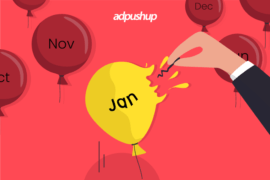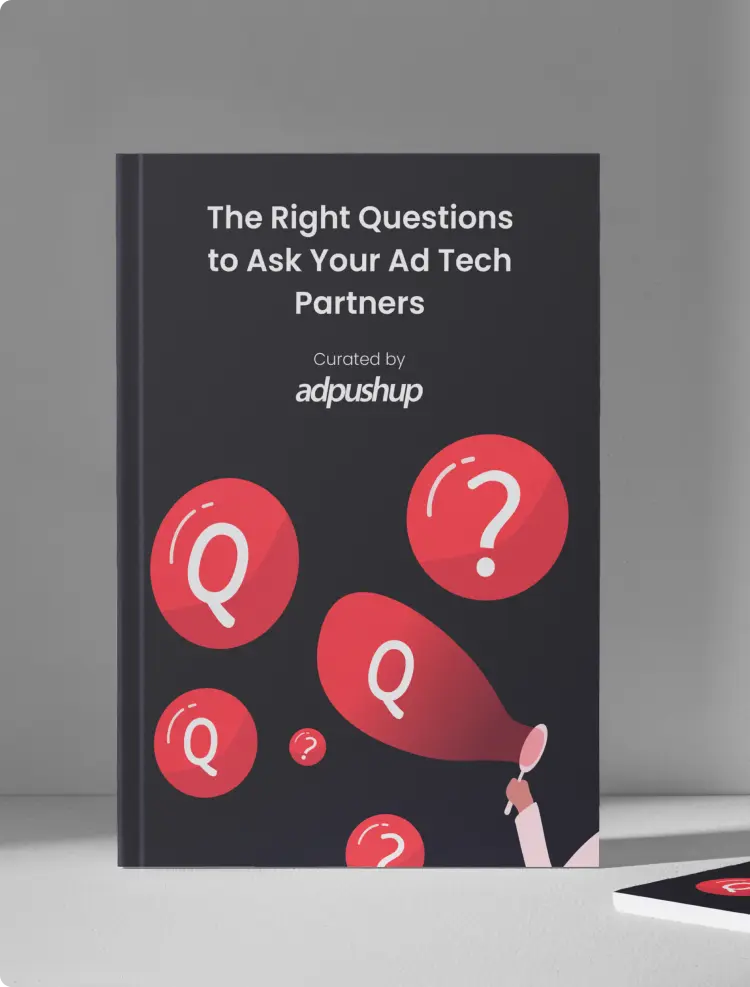
This is a guest contribution by Michael Akinlabi, a freelance writer who runs his own blog PluckMyFeet, where he teaches people how to make money from blogging.
Making money online has always been your dream. You want to quit your job and leave the boring work behind.
You know it’s possible to make money online.
You’ve read lots of success stories about people making thousands of dollars every month doing what they love. You know that with effort, you can do it too.
You’ve read a lot. Visited a lot of blogs. And yet, you still don’t know where to start.
You feel like blogging experts are keeping something from you; almost as if there’s a magic secret they know that you don’t.
Yes, there’s a secret. Don’t bother asking them though because they won’t tell you. They will instead show you their income reports and keep you coming back to their blogs.
I don’t despise bloggers who publish income reports. I know smart guys who publish their monthly income reports. Some of them are my mentors.
For instance, I like Pat Flynn. You’ve probably come across his blog. He was fired from his job at the height of the global financial crisis. He now makes over $100k every month from blogging.
Ramit Sethi is a millionaire author and blogger, but he doesn’t publish his monthly income reports. Sethi has inspired many, myself included. He has turned his blog into a multimillion dollar business.
I respect both Flynn and Sethi.
But one thing I haven’t seen them and others publish is a step-by-step guide that teaches you how you can make money online through blogging.
The problem is there are too many things you have to do when it comes to blogging. It’s easy to be overwhelmed with it if you don’t break it down into smaller tasks.
In this article, I will share a step-by-step guide to making passive income with your blog. I will show you how you can do this over a 12 month period. I’ve broken down the steps you have to take, along with when you should take each step.
This article is for you if you’re really serious about making money online through blogging. If you can discipline yourself to follow the instructions laid out in this article, you’ll have a business 12 months later.
Okay, let’s get started:
January – March
95% of bloggers fail to make money because they fail to prepare.
Preparation is victory.
Blogging is not another get-rich-quick scheme. So if you’ve been thinking that blogging can make you rich without planning and doing the work, then you may as well stop reading right now because this article isn’t for you.
But if you believe you can become self-employed and you’re ready to put in the work, then this is for you.
I’m about to reveal how blogging can help you become self-employed within 12 months.
Recognize Your Target Audience
Some people start their blogs and write about random topics — just anything that comes into their minds. The next thing you hear them say is “blogging is hard”.
You have to recognize who your blog is made for. Who is your target audience?
I’ve seen bloggers who write about parenting today and home décor tomorrow.
Don’t make this mistake.
Is your blog for single moms? Is your blog for married moms? Is your blog for overweight moms?
Or, is your blog for fashionistas? Or for single men who are shy of talking to beautiful women?
Like now, if you ask me “Who is your blog made for?”, my answer is simple and straightforward: PluckMyFeet is made for people who can’t stand their day job and are ready to quit their boring jobs and live their dream life.
Who is your blog made for?
This is an important question and you should answer it before you proceed.
Recognize Your Competitors
Isn’t it dumb to be fighting a war without knowing who you’re fighting?
Some bloggers start their blogs. They keep their blogs up. But if you ask them to name their top 5 competitors, you’ll realize that they don’t have any idea.
How can you stay ahead of your competitors when you don’t even know who they are?
Smart bloggers know their competitors.
Smart bloggers know the marketing strategies their competitors are using. Smart bloggers know how their competitors are making money.
A simple Google search will tell you who your competitors are.
For example, if your audience is overweight moms, you can type “overweight moms” into the search box on Google. You’ll see sites like Parenting.com, ScaryMommy.com, BabyCenter.co.uk, and HealthDay.com.
“Overweight mom” is a small niche, and you wouldn’t expect a lot of competition. These sites may not be direct competitors, but they want the same audience as you.
You’d want to learn what sort of content they are publishing on their blogs, how they are promoting each of their blog posts, how many times they publish each week, and how you can do better than them.
If most of your competitors are publishing blog posts that are under 1,000 words, what if you write 2,000-word blog posts? Would that give you a better chance of outranking them on search engines?
If most of your competitors are promoting their blog posts on Facebook, what if you repurpose and promote your blog posts on YouTube? Would that expose you to a new audience your competitors aren’t targeting?
What if your competitors are publishing once per week, can you publish thrice per week to give you an advantage and set your blog apart?
These are some of the questions you should ask yourself before you decide to compete in any niche.
“Can I really compete?” If you think you can’t compete, then it will be better you move to the next less competitive niche where you think you can.
So many people jump into blogging only to discover a year later that they really can’t compete with their competitors. This is why preparation is the key. It helps you make an educated guess and take a calculated risk.
Register Your Domain Name
Okay, let’s assume that you now know your competitors, understand their game, and you believe you can crush them.
It’s time to register a domain name.
You should ensure your domain name is the .com extension. You should only use the .net extension when you’re the owner of the .com extension.
Why am I saying this?
The .com extension is the most popular of all domain extensions.
People are used to typing .com into their browsers. If you can’t get the .com extension of your name of choice, you should move to the next good name that’s available.
Another thing you should keep in mind is to make sure your domain name is short, sweet and easy to pronounce. For example, Facebook, YouTube, Google, Yahoo, AdPushup, and PluckMyFeet are all easy to pronounce.
You don’t want me to bite my tongue when pronouncing your domain name.
Choose A Good Web Host
WordPress is my favorite blogging platform because it’s beginner friendly. If you can send and receive emails, you can manage WordPress.
You need a good web hosting service to host your WordPress blog.
There are lots of web hosting services out there. Some of the popular ones are Bluehost, SiteGround, HostGator, JustHost, and WPEngine.
I’m not writing this to tell you which one is better.
I believe a good web host is affordable, secure, has a great tech support, a good reputation and great customer reviews.
Maybe I’m biased, but I’m in love with Bluehost and SiteGround. You should do your homework and see which one you like.
Get A Good Blog Design
You need a good blog design to stand out from the crowd.
A good design has an attractive navigation, a simple header, a fantastic footer, a nice “Next” and “Previous” posts feature, good widget options, a featured post option, an excellent “About Author” feature, a remarkable comment design, and a lovely background that promotes lots of white space.
If you ask me which themes I like best, I will tell you the ones that come from StudioPress, the maker and seller of Genesis child themes.
Genesis is one of the most popular WordPress frameworks.
If you visit WordPress design forums, you’ll hear people mentioning child themes. It’s because they’re great.
I also like DIYthemes. Their themes are easy to use.
You can also visit ThemeForest for lots of high-quality WordPress themes you may want to use on your blog.
Get a Catchy Logo
If you visit PluckMyFeet, you will see that I have a very simple logo.
Well, it’s not really a logo. Sometimes, I feel bad in saying this, but I designed that logo myself using Canva.
You don’t need to blow thousands of dollars on a fancy logo. All you need is something that people can associate your blog with.
When you see that Apple logo, you know what it means. When you see that HP logo, you know what it means. It means a product is made by Apple or by HP.
It’s good to have a logo on your blog for branding purposes.
If you really want a nice one, you can get it at 99Designs. You can launch a logo contest for your blog, sit back, and watch the variant roll in.
Will Mitchell did this when he wanted a new logo for his blog StartupBros, and below are different logos he got.

If you’re like me, then you may want to just start blogging now and worry about having the logo later.
WordPress Plugins You Should Install
Plugins are what makes WordPress so amazing. Here are the plugins you should install after setting up your blog with WordPress:
- Contact Form 7: A contact form plugin. Simple but flexible.
- Yoast WordPress SEO Plugin: This plugin improves your SEO. It helps you optimize your WordPress blog for search engines and social media.
- W3 Total Cache: Easy Web Performance Optimization (WPO) using caching: browser, page, object, database, minify and content delivery network support.
- WordPress Popular Posts: It displays a highly customizable widget in your blog’s sidebar.
- Shareaholic: It displays social sharing buttons on your blog.
- Yet Another Related Posts Plugin: It displays related posts on your blog.
- Akismet: Akismet checks your comments against the Akismet Web service to see if they look like spam or not.
- Disqus Comment System: A substitute for the traditional WordPress comment system. I use it on my blog so I don’t have to worry about comment spam.
Create “About” and “Contact” Pages
Don’t forget I said blogging is a business. You must treat it like a business if you really want to succeed at it.
You need an “About” and a “Contact” page. Many people who visit your blog will want to learn more about you and contact you. Therefore, these two pages are essential. They make people see you as a real person.
You should write your “About” page using a conversational tone. You should use the word “you” because you’re addressing the reader directly here. You can share the story of your life as many other bloggers do. We all have stories people can relate to.
A contact page is a place where your readers can reach you and connect with you easily.
April – June
Even though you haven’t started blogging yet, a lot of things are going on behind the scenes. You’re setting the stage for success. Like I told you before, preparation is victory. It’s important you prepare well.
You’ve done a lot in the first 3 months. You know your target audience, their challenges, and their goals. You know your competitors, you know what you can do to beat them. You’ve also come up with a nice domain name. Your blog is hosted with a good web host. You have a nice logo. Plugins are installed on your blog. And your “About” and “Contact” pages have both been created.
What’s next?
Publish High-Quality Content
You’ve come across this advice on many marketing blogs. They say you should publish high-quality content, and that’s it.
What is high-quality content? When you see a high-quality content, how do you know it is high-quality content?
Good questions!
My definition of a high-quality content is simple:
High-quality content is a kind of content that helps your readers solve a pain-point.
For you to create high-quality content, you need to recognize the exact challenges your target audience has.
In the first 3 months, I asked you to identify your target audience. In fact, it was the first thing I asked you to do. Isn’t it?
I used the example of overweight moms. Let’s use that example again.
What are the major challenges of overweight moms?
Overweight moms may have unhealthy eating patterns. Many overweight moms dislike exercise. Overweight moms likely struggle with body image issues.
Now you have some topic ideas you can write about on your blog if your target audience is overweight moms.
So what are the pains of your target audience? Have your competitors written things that address those pains? What are the things your competitors haven’t talked about?
You have to identify those gaps, the things your competitors haven’t talked about that your target audience would like to read. It’s all about doing it better than your competitors. There are always things you can improve and do.
The presentation is also important.
Take a look at the below image:

Now take a look at this image and see the difference:

Both the posts talk about yoga. Which one would you like to read?
The second one, right?
This is exactly what I’m talking about. You can always make things better.
Look at what your competitors are doing and make it 10x better.
Note that every post you create at this time is meant to be published on your blog. No guest posting. Just focus on creating good content for your blog.
Get Social Shares
I know your blog may seem like a ghost land at this point. So how should you promote your content?
Social media is the key!
If you check Twitter and Facebook, you’ll see that some people are sharing your competitors’ content. Tools like Topsy and BuzzSumo can give you insights on who shared your competitors’ content.
What you should do now is reach out to these people and tell them about your amazing content. You and your competitors are competing for the same audience, so why not reach out and ask for a tweet or mention?
Some of your target audience are webmasters. You can easily reach them through their sites. They have their contact page there, so you can just contact them. It’s a numbers game. Some people will share your content on their networks. Many people won’t. You don’t have to feel bad about this. It’s normal. But a single tweet from an influencer could send thousands of visitors to your blog.
Another thing you can do is ensure you follow people who are following your competitors on Twitter. Many of them are your target audience and will be very interested in what you’re publishing on your new blog. Your goal is to develop a relationship with them and make sure they are sharing posts you publish. If you can develop a relationship with just 50 – 100 Twitter users, then that’s good. Every person counts at this stage.
You’ll also have to be active on Twitter, and make sure you’re using hashtags that are relevant to your blog topics. The more you’re active on social media, the more visitors your blog will receive.
You only have to focus on creating great content on your blog and getting more social shares in 4th to 6th month.
July – September
We should assume you’ve been blogging hard for the past 3 months. This is the 6th month. You’re probably receiving some visitors from Twitter and Facebook at this point. And Google too is starting to show some love. Your data may not look interesting at this point, but you’re about to up your game to become the new king of your niche.
Okay, let’s focus on the next three months.
Build Your Email List
Some people might want to protest why they shouldn’t have started collecting emails earlier. Email is important. I know.
Remember that our goal is not to do many things at the same time. The goal is to make blogging easy for you.
The reason why many bloggers fail is because they feel overwhelmed by the number of things they have to do. That’s why I recommend you take one step at a time.
Now, let’s talk about email, and why you need it at this point.
Email is said to have an average ROI of $40 for every dollar spent.

In fact, email has an average conversion rate of 4.16% which is more than search (2.64%) and social (0.48%) combined.
So you need to start collecting emails, but you also have to be strategic about it.
You’ll have to make people an offer of some kind before they’ll even consider you their email address. People won’t drop their email for nothing.
So, what should you do?
Create a short report. We can also call it an ebook. This ebook should address one of your audience’s pain points.
You should quickly put the ebook together within a week. Make sure it’s at least 5,000 words and contain valuable insights your readers don’t usually see around the web.
The ebook is what you’ll offer your blog visitors in return for their email address.
Use AWeber or MailChimp to start collecting emails.
Now, you have to put the email opt-in form at the right places on your blog.
You should put your opt-in form in your blog’s feature box just like Fizzle is doing with The Sparkline blog.

A good feature box provides a 10-second pitch of what your blog is about, and you can quickly collect email even if the visitor only spends 20 seconds on your blog. Everybody sees the feature box.
You could also collect email through the top sidebar just like Neil Patel is doing with his Quick Sprout blog:

You can see he offers a free course and ask his visitors to sign up for this course with their email address. That’s the strategy.
You should also put your opt-in form below the article on your blog. Help Scout does this on their blog:

There are many ways to collect emails on your blog. The strategies I just shared with you are effective.
What’s next?
Create Viral Content
When your content goes viral, thousands of people will share it with their friends on Facebook and Twitter.
Let’s see what makes contents go viral.
There are 10 things that make content go viral, according to a study conducted by BuzzSumo which analyzed over 100 million articles in over 8 months.
1. Long content gets more social shares
The study shows that the longer your content, the more social shares it gets. For example, this post is already over 3,800 words at this time.

Your content should be long enough to increase its chances of going viral.
2. Having at least one image in your post leads to more Facebook shares
Make sure you include an image in every post you publish on your blog. It increases your content’s chances of receiving more shares on Facebook.

You should implement social meta tags and make sure you add a thumbnail image. It will help you get more shares on Facebook.

3. Having at least one image in your post leads to more Twitter shares
Twitter has the power to send thousands of visitors to your blog. The BuzzSumo study showed that having at least one image in the post leads to more tweets on Twitter.

4. Make your post produce awe, laughter, or amusement in your readers
Positive emotions are powerful.
Here are some of the emotions your post should produce to increase its likelihood of going viral.

Note the difference between positive and negative emotion.
The key positive emotions are awe (25%), laughter (17%) and amusement (15%).
Negative emotions like sadness and anger only made up 7%.
5. People love to share lists and infographics
There are different types of posts:
- Lists
- Infographics
- How-to articles
- What posts
- Why posts
Out of all these five, list posts, and infographics are the most popular.

Write more lists posts and create infographics. They are more likely to go viral.
6. 10 is the magic number for list posts
Make sure you’re using the number 10 when writing your list posts. List posts with the 10 number are more likely to go viral.
Numbers like 16, 23 and 24 also tend to do well.
7. Articles that have an author byline tend to go viral
The study also shows that articles with an author byline receive more shares on Twitter, LinkedIn, Facebook, and Google+. The author byline develops trust in people.

Make sure your author bio is visible on your blog.
8. Getting one extra influencer to share it will increase your content likelihood of going viral
Make sure you get at least one influencer to share your content after it is published.
The study showed that having one influencer share your content would increase your content reach by many factors.

9. Re-promote your content on a regular basis
If you publish a blog post, shared it, and it didn’t go viral, it doesn’t mean it can’t go viral. You have to keep re-promoting your blog posts on a regular basis. Sometimes, you need to try more than once. Just keep promoting.
That’s why you should be publishing evergreen content on your blog. Evergreen content, unlike news posts, is capable of receiving traffic years after it was published.
10. Tuesday is the best day to get social shares
If your goal is to get lots of social shares, then Tuesdays are when you should be publishing. This doesn’t mean you shouldn’t be publishing on other days, though.

Content also tends to receive lots of shares on Thursdays and Mondays. They are the second best days.
Make sure all your content has these 10 ingredients to give it the maximum chance of success.
Guest Blog
When it comes to growing your email list, guest blogging is one of the best ways to it.
Note that I’m not talking about guest blogging for links or SEO. I’m talking about growing your email list.
An email list is the most valuable thing a blogger can have.
If you rank high on Google today for every one of your target keywords, you just might lose those rankings tomorrow. Because Google may decide to change their search algorithm.
But you’ll never lose your email list.
For guest blogging, you need blogs that have an engaged audience and whose topics are similar to the contents you’re publishing on your blog.
Alltop is my favorite tool for finding blogs for guest posts.
Visit the Alltop site, click “Topics” in the menu tab and select a topic related to your blog. You’ll see blogs that recently published articles on those topics.
Or, you can just input your topic into the search bar on Alltop. Alltop will even display related topics, which helps you expand your search.

For example, I clicked on “Affiliate Marketing” which is a topic related to my blog and here are some of the blogs I found along with their recently published contents:

As you can see, all these blogs talk about affiliate marketing.
Click the link to all those blogs and contact their owners. Pitch them your guest post ideas. Do this for every topic related to your blog.
Make sure that you’re referring people to a landing page where you have your free ebook waiting for them. You should pitch your free ebook offer at the end of every guest post you publish.
Your email list will gradually begin to grow when you follow these instruction.
Remember, your goal is to build your email list, not to get backlinks to your blog. Yeah, backlinks are good, but that should only be an afterthought.
October – December
Hurrah! We are now in the final 3 months of blogging. It’s been a long, hard road. Now, we are here.
Let’s assume you’ve been guest blogging for the last 3 months. You should be seeing some subscribers by now. If some of your content does well on Facebook, Twitter, Stumbleupon, LinkedIn and Pinterest, you would have received thousands of visitors.
So what next?
Guest Blog HARDER!!!
You should have published a lot of guest posts on a lot of small blogs at this stage. It’s time to go for bigger blogs with a bigger audience. It’s time to go for authority publications like Forbes, Lifehacker, Mashable, and others. You have the confidence now since you’ve got on those small sites already.
This won’t be easy, but you have to do it.
Find those big sites and start pitching your guest posts to their editors. Don’t be afraid of rejection.
Fail, and fail fast. The editor at Huffington Post rejected your guest post? Pitch it to Lifehacker. Don’t stop pitching.

You have to be persistent when trying to publish your guest posts on authority sites. One post on a small site can produce 10 to 100 subscribers. But a single guest post on an authority site could generate thousands of subscribers.
You see the difference?
Create and Launch Your Product
You’ve been blogging for the past 9 months. Now, it’s the time to reward yourself with a paycheck.
You need to create and launch your own product. You probably have like 2,000 to 4,000 people on your email list. And your blog is probably receiving 500 to 1,000 daily visits. Good! You’ve got an audience.
It’s time to make money from that audience.
Your constant guest blogging activities is sending you some high-quality visitors. People are also discovering your blog on Twitter and Facebook by this time. Plus organic traffic is probably growing too. Bloggers are also starting to link to your blog because of the high-quality content you’ve published.
You don’t need a lot of visitors at this time. If your visitors are 10,000 a month – that’s fine. You can make money from that and continue to grow from there.
So you have to create your own product. Creating your own product is the best thing.
You can create an ebook. You can create an online course. Both are lucrative.
You don’t have to struggle for product ideas since you know your audience pains, and you know the solutions they seek. You only have to come up with the product.
Let’s assume your blog receives 10,000 visitors per month. Your product sells for $37. And 100 people ended up buying your product. That would earn you $3,700.
Now you earned $3,700 at the end of December. You have $3,700 to show for 12 months’ work. I know that doesn’t sound awe-inspiring. But it’s just the start.
Your blog is the platform. It gives you the buyers. All you do is create the product and bank in on the opportunity.
Note that your blog is not made to sell. It’s made to help people. The more you help people, the more you help yourself.
If you found this post to be helpful, please do share it with your friends on your favorite social network.
A growth blog for professional bloggers and ad ops professionals.










